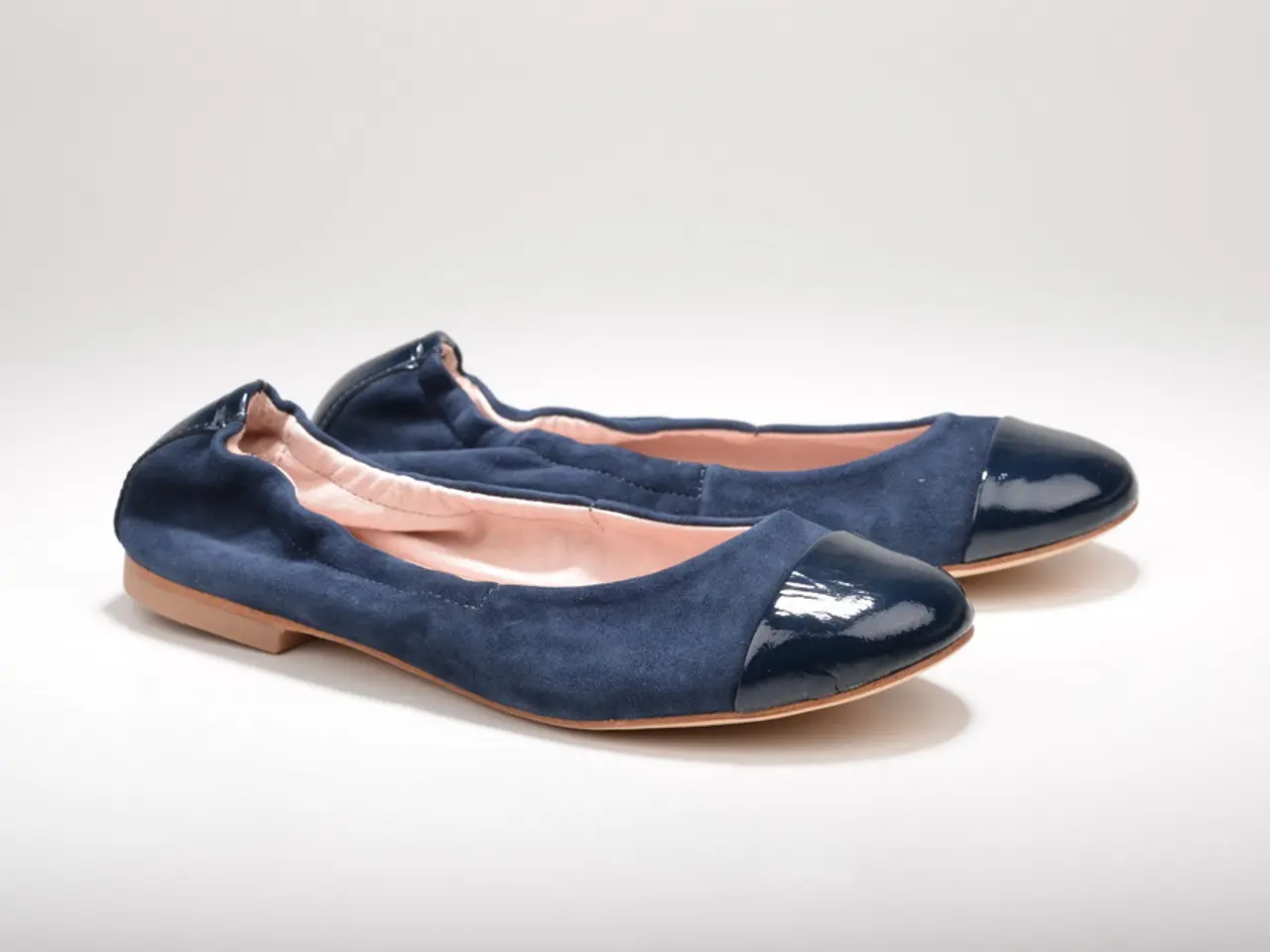Feet Turning Purple: Understanding Possible Causes and Appropriate Treatments
Purple feet can be a cause for concern, as they may indicate an underlying health issue related primarily to circulation or vascular problems. In this article, we explore the common causes and treatments for purple feet.
### Common Causes of Purple Feet
1. **Peripheral Cyanosis**: This condition occurs due to poor oxygenation of the blood reaching the extremities, often linked to circulation problems in blood vessels and the heart, or environmental factors such as cold exposure. Cyanosis causes blue or purple discoloration of nails, toes, and surrounding skin due to a lack of oxygen in the blood.
2. **Vascular and Circulatory Disorders**: - **Peripheral artery disease (PAD)**: Narrowed arteries reduce blood flow, causing purple or bluish feet. - **Chronic venous insufficiency**: Veins fail to return blood efficiently to the heart, leading to blood pooling and visible purple or dark veins on legs and feet. Varicose veins can be part of this. - **Blood clots (Deep Vein Thrombosis)**: Can restrict blood flow and cause discoloration, requiring urgent care.
3. **Specific Conditions**: - **Raynaud’s phenomenon**: Vasospasms in small blood vessels triggered by cold or stress cause the feet to turn purple or blue. - **Lupus and other autoimmune diseases**: These can affect circulation and cause color changes. - **Diabetes**: May lead to poor circulation and purple discoloration from complications. - **Injury or trauma**: Bruising or vascular damage to the feet can result in purple coloration.
4. **Spider veins and venous malformations**: Weakened or damaged veins near the surface can appear as purple spider veins on feet and ankles, caused by factors like age, genetics, prolonged standing, pregnancy, smoking, and hormonal influences.
### Treatments for Purple Feet
- **Address underlying circulation problems**: For venous insufficiency or peripheral artery disease, treatments include endothermal ablation, sclerotherapy, or surgery to improve blood flow and vein function. - **Lifestyle modifications**: Reducing prolonged standing, quitting smoking, managing weight, and regular exercise help improve circulation. - **Cold exposure avoidance and protection**: For Raynaud’s phenomenon, keeping feet warm and avoiding triggers helps reduce symptoms. - **Managing autoimmune conditions**: Treating lupus or related disorders with immunosuppressants or other medications as prescribed by a doctor. - **Foot care and skin management**: If purple feet are due to skin thickening or injury, soaking and gentle care with moisturizers and protective footwear can help. - **Medical evaluation**: Purple discoloration may signal serious conditions requiring immediate medical attention, especially if accompanied by pain, swelling, or ulcers.
### When to Seek Medical Help
Purple feet, especially with swelling, pain, or wounds, require prompt evaluation by a healthcare provider to diagnose the cause and start appropriate treatment. Conditions like deep vein thrombosis or advanced vascular disease can be life-threatening if untreated.
In summary, purple feet often indicate circulation problems such as cyanosis, venous insufficiency, or vascular diseases. Treatments focus on improving blood flow, managing underlying conditions, lifestyle changes, and preventing complications. Professional medical assessment is essential for proper diagnosis and care.
People with a family history, certain medications, autoimmune diseases, or smoking habits are at risk of developing vasculitis. Varicose veins are enlarged, swollen, twisting veins that often appear blue or dark purple in color, typically on the legs and feet, and can be managed with endothermal ablation, sclerotherapy, or surgical removal. Raynaud's disease can be a symptom of other health conditions such as lupus, rheumatoid arthritis, scleroderma, inflammatory myositis, and Sjogren's syndrome. Signs of frostbite include discoloration of the skin (gray, blue, or purple), pins and needles, pain, numbness, skin that feels unusually hard or resembles wax in appearance, and should be treated immediately by a doctor.
- Peripheral cyanosis, causing blue or purple discoloration of nails, toes, and surrounding skin, is a result of poor oxygenation in the blood.
- Vascular and circulatory disorders like peripheral artery disease and chronic venous insufficiency can lead to purple or bluish feet due to reduced blood flow.
- Blood clots (Deep Vein Thrombosis) can cause discoloration and require urgent medical attention.
- Raynaud’s phenomenon, triggered by cold or stress, results in the feet turning purple or blue due to vasospasms in small blood vessels.
- Lupus and other autoimmune diseases can affect circulation and cause color changes, including purple discoloration.
- Diabetes may lead to poor circulation and purple discoloration from complications.
- Injury or trauma can result in purple coloration on the feet from bruising or vascular damage.
- Spider veins and venous malformations, appearing as purple spider veins on feet and ankles, are caused by factors like age, genetics, prolonged standing, pregnancy, smoking, and hormonal influences.
- Endothermal ablation, sclerotherapy, or surgery can improve blood flow and vein function in cases of venous insufficiency or peripheral artery disease.
- Lifestyle modifications like reducing prolonged standing, quitting smoking, managing weight, and regular exercise help improve circulation.
- People should avoid cold exposure and protect their feet from triggers to reduce symptoms of Raynaud’s phenomenon.
- Treating lupus or related autoimmune disorders with immunosuppressants or other medications, as prescribed by a doctor, can help manage purple feet.
- Soaking and gentle care with moisturizers and protective footwear can help with purple feet due to skin thickening or injury.
- Professional medical assessment is essential for proper diagnosis and care of purple feet.
- People with a family history, certain medications, autoimmune diseases, or smoking habits are at risk of developing vasculitis.
- Varicose veins, appearing blue or dark purple in color, can be managed with endothermal ablation, sclerotherapy, or surgical removal.
- Raynaud's disease can be a symptom of other health conditions like lupus, rheumatoid arthritis, scleroderma, inflammatory myositis, and Sjogren's syndrome.
- Signs of frostbite include discoloration of the skin (gray, blue, or purple), pins and needles, pain, numbness, skin that feels unusually hard or resembles wax in appearance, and should be treated immediately by a doctor.
- Aging, cardiovascular health, nutrition, and eye health are all important factors to consider for maintaining overall health and wellness.
- Fitness and exercise, skin care, and weight management are essential components of workplace wellness.
- Workplaces should prioritize mental health and implement mental health support systems for employees dealing with conditions like bipolar disorder, depression, and anxiety.
- Chronic diseases like diabetes, cancer, COPD, and multiple sclerosis require ongoing management, support, and self-care.
- Therapies and treatments, including medication, nutrition, and lifestyle changes, can help manage and improve conditions like HIV, atopic dermatitis, Crohn's disease, and neurological disorders.




